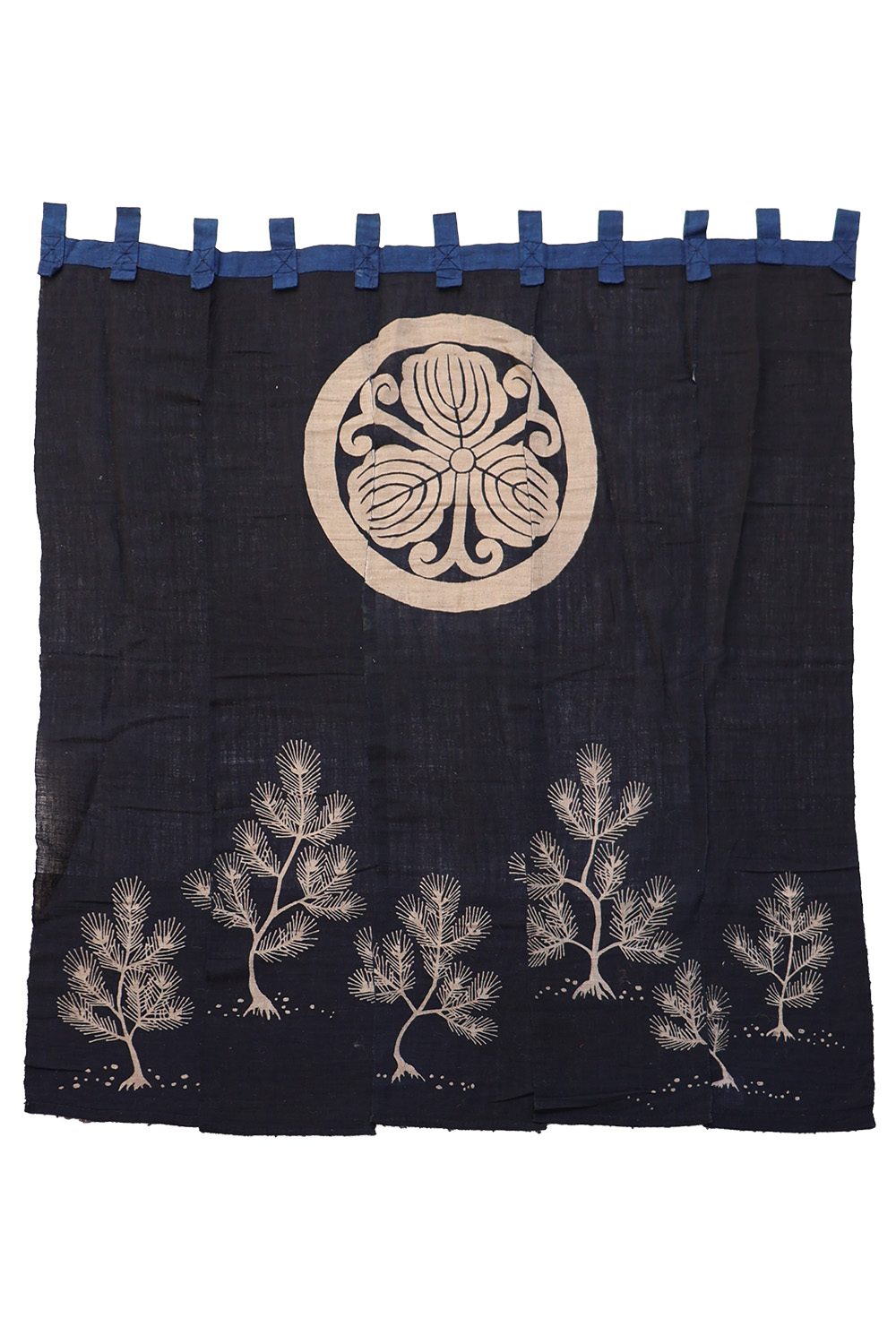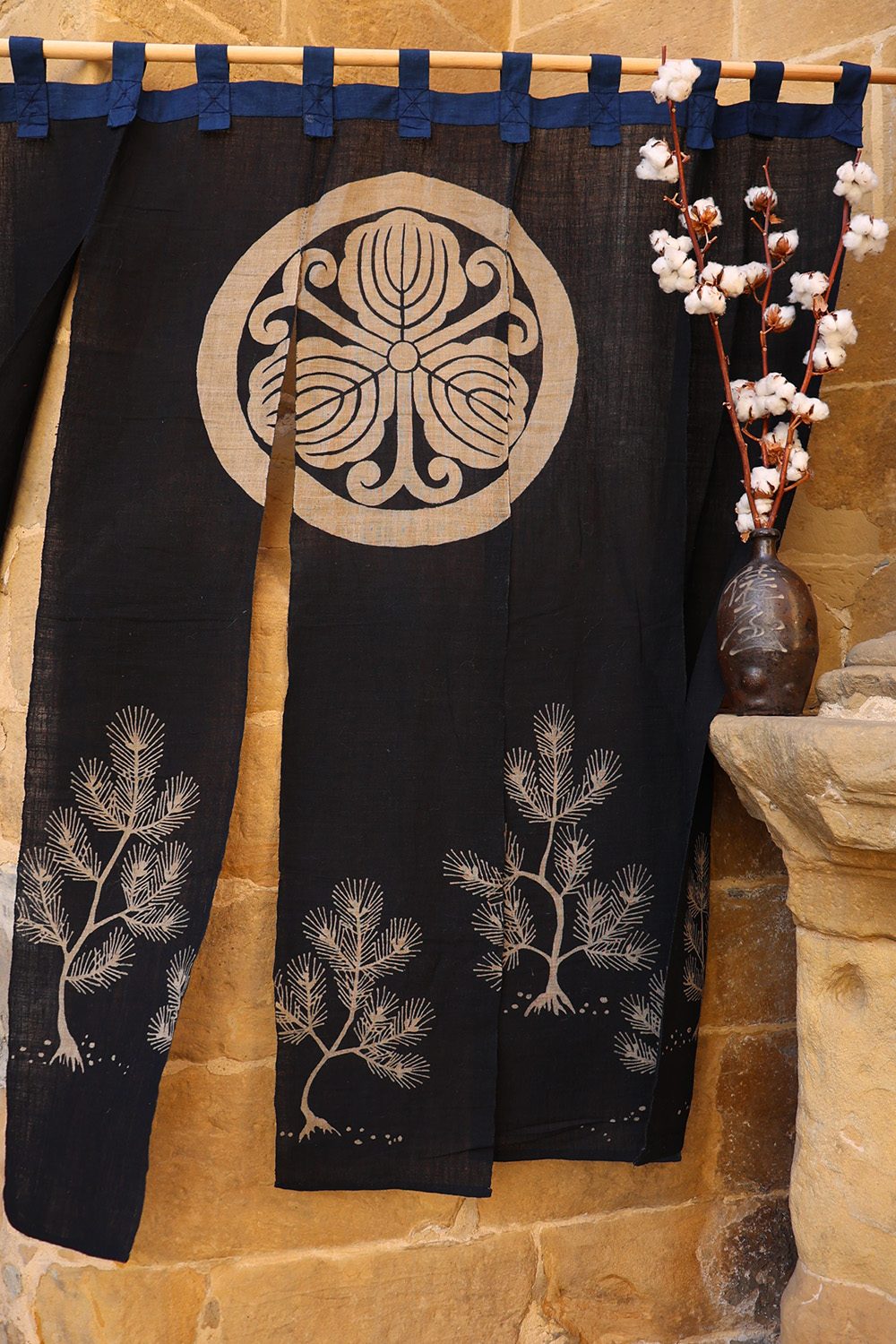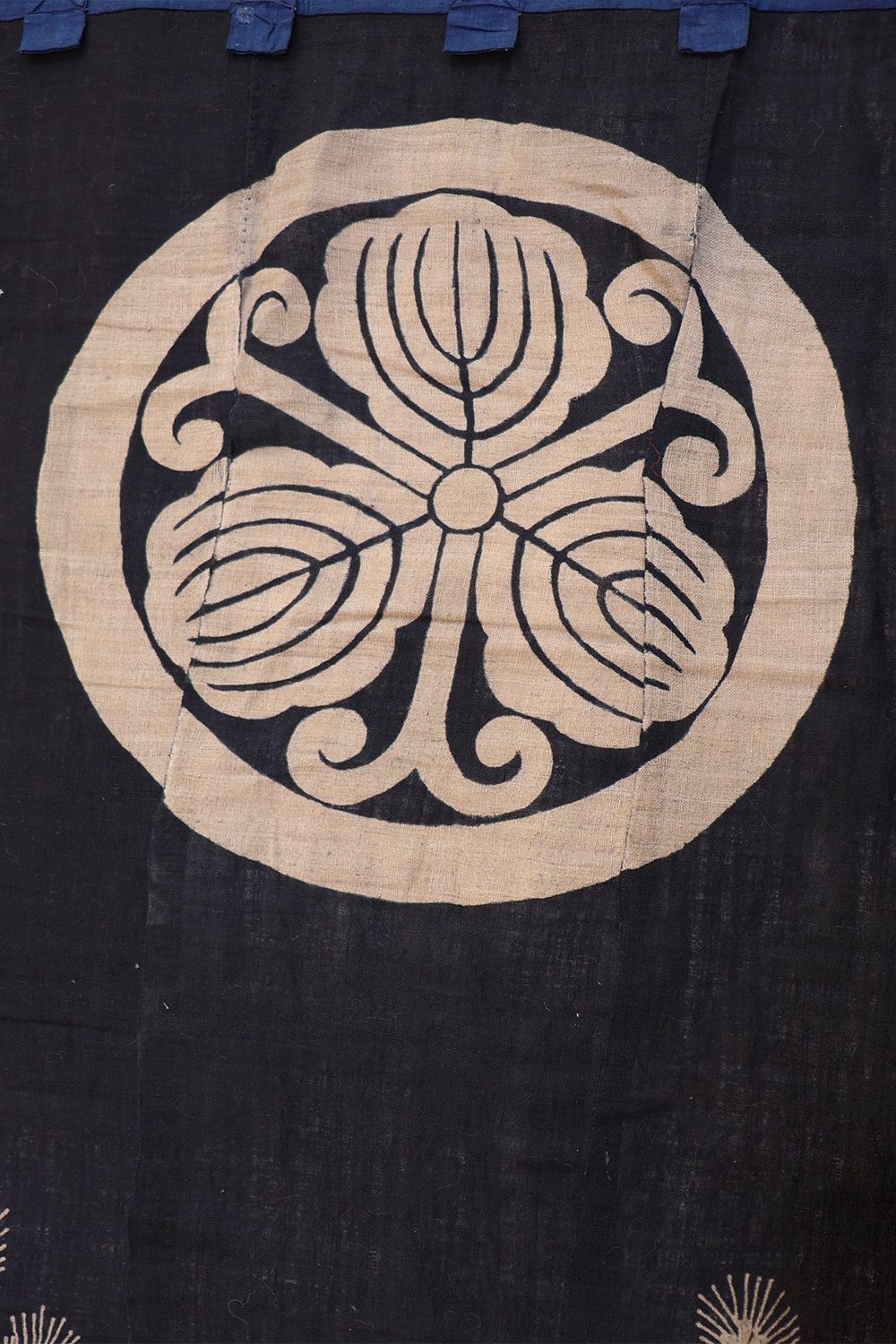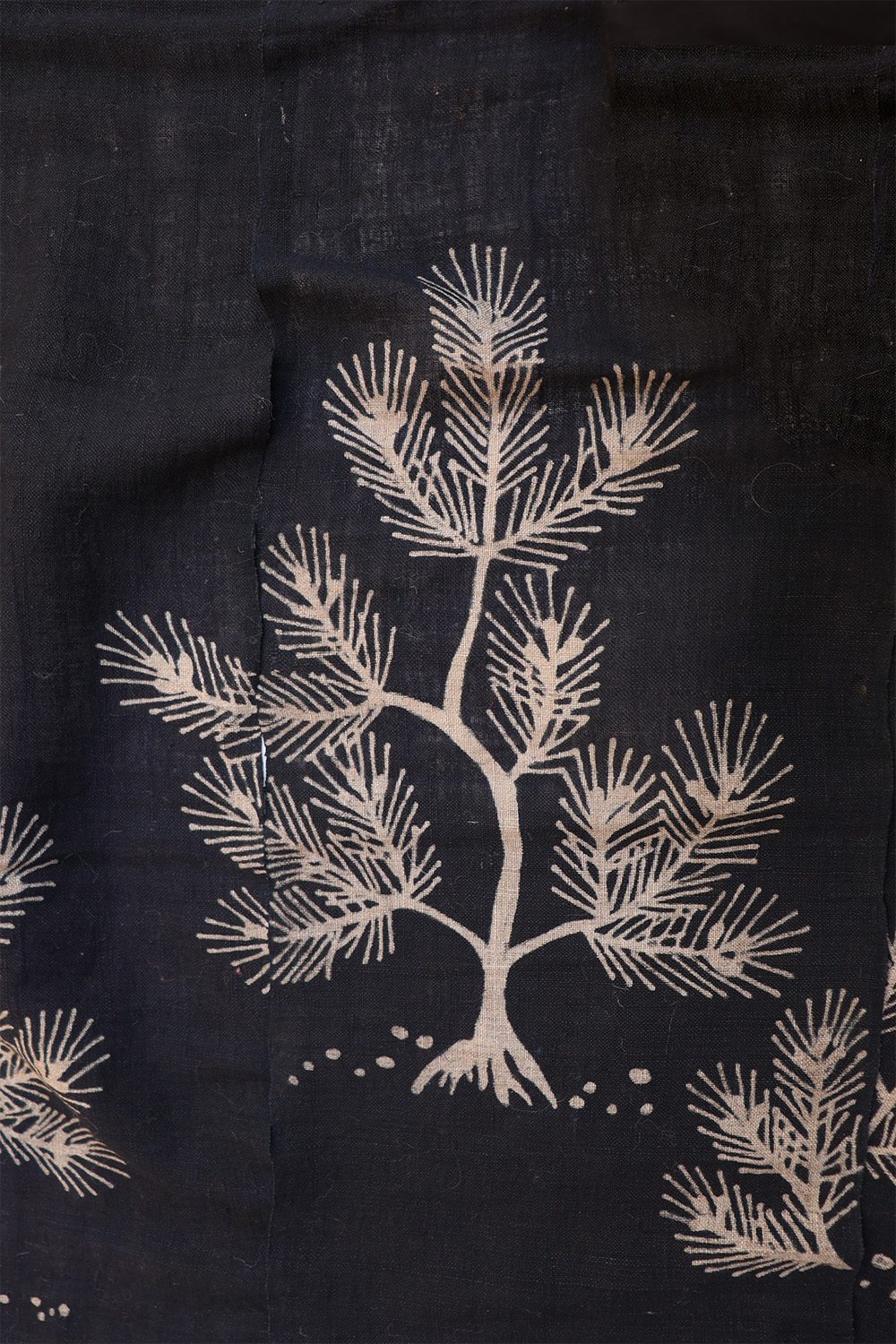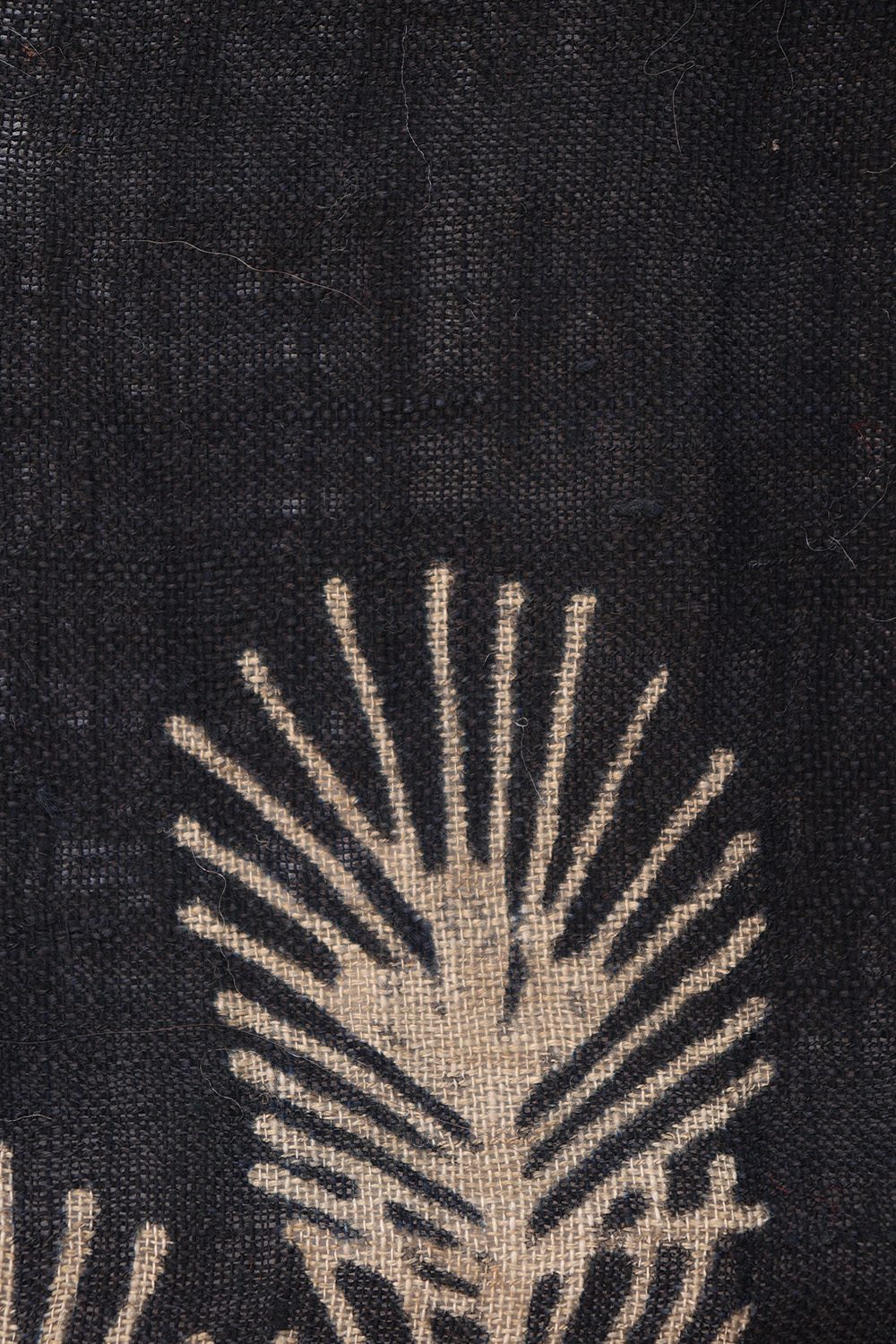450.00 €
A noren (shop curtain) hangs across the upper part of a doorway as a sort of partition and is supported by a pole passing through its loops. It is made up of several vertical panel sunder which people can easily pass through the doorway.
The Kamon and pine tree motif that covers the coarse plain weave of this noren was drawn with the tsutsugaki (literally, “tube-drawing”) technique. In this paste-resist dyeing process, the design is drawn with an applicator consisting of a paper cone with a metal tip that trails rice paste onto the cloth. Then the cloth is dyed, usually with indigo. The areas covered with paste resist the dye and remain white while the background, through repeated dipping and oxidation, attains a dark blue color.
At first glance, noren appear to be curtains as you would encounter in any western home. However, the shoji windows found in traditional Japanese architecture have no need for curtains; they are sliding wooden frames covered by translucent paper. It’s also worth noting that some traditional Japanese windows are circular in shape and serve as a unique way to view nature. You can see therefore, that Japanese curtains did not develop to cover windows, but rather to compartmentalise space and divide rooms into separate areas.
Another important difference between noren and standard window curtains, is that the latter are designed to sit open during the day, generally pulled to one end of a curtain rail. Japanese noren on the other hand generally remain in place at all times, and are pushed aside momentarily to allow entry or exit.
The final significant difference stems from this fact that noren remain ‘closed’ at all times: so to avoid blocking out all the light from a doorway, they tend to be much shorter than curtains, typically coming down to only around shoulder height.
About 800 AD, norens were used by all Japanese households. They were seen in farm communities, fishing towns and mountain villages as a simple curtains displayed at the front of a house. Their purpose was to protect the home from the sun, wind, dust and, in addition, to separate rooms within the home.
Later on in the early 1600s, noren appeared ubiquitously in front of traditional Japanese shops where they displayed images & kanji letters. These noren were basic advertising signs that indicated the nature of the business within; for example sushi shops, sake stores, public bath, etc. Often they showed kamon, or family/business crest as a business logo. These noren appeared at the shop’s entrance when it opened for business and were removed at closing time.
Shop noren were typically made from hemp for its durability and interior noren might be made either from hemp or cotton.
This antique Noren curtain is woven with hemp, dyed with indigo and the motifs have been made with the tsutsugaki technique.
Material: Hemp
Size: 175×155 cms
Origin: Japan
Made in 1920s
1 in stock
Additional information
| Weight | 0.9 kg |
|---|
Subscribe and receive the lastest news
